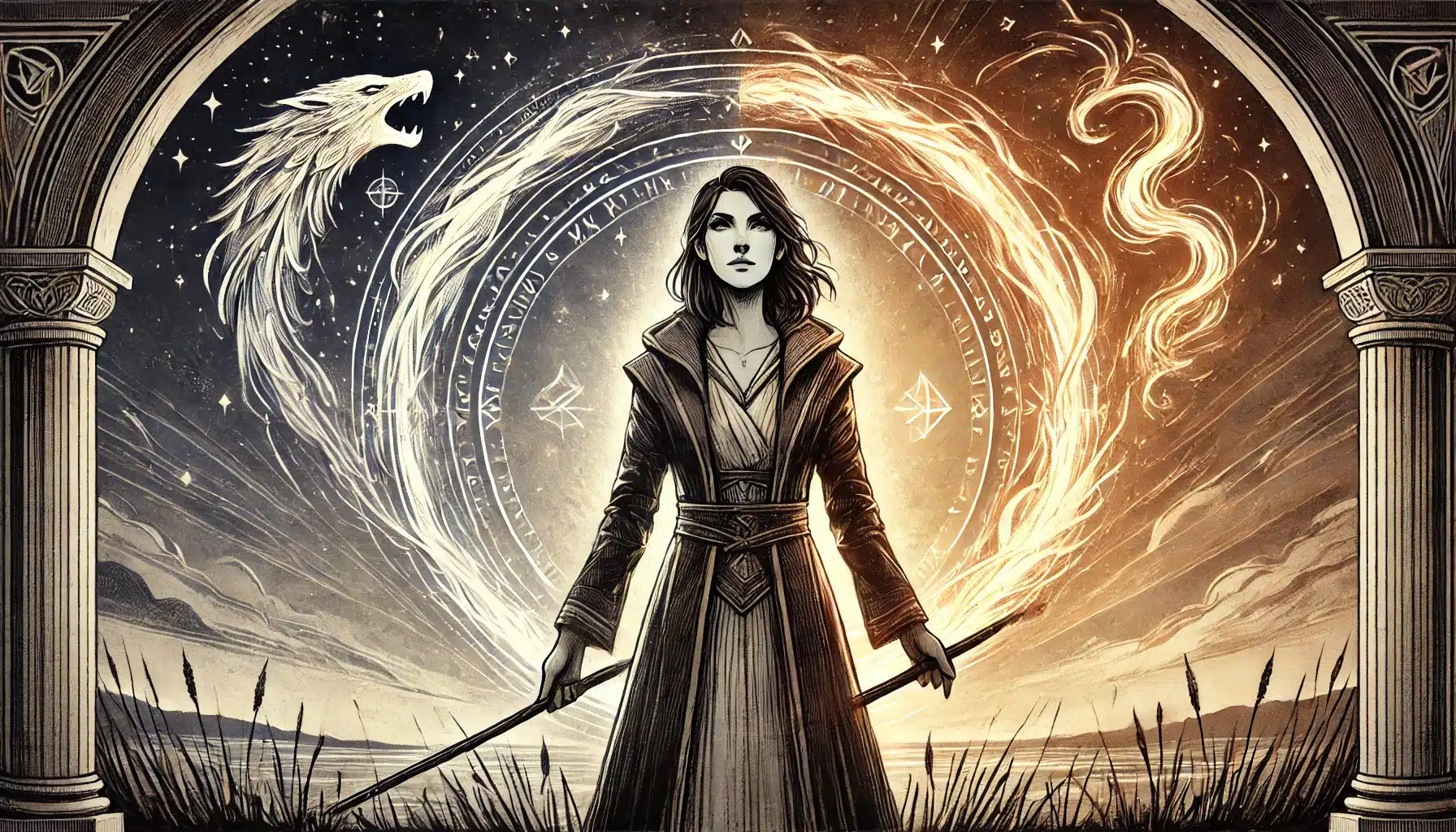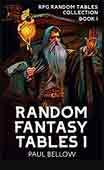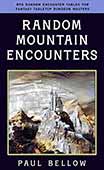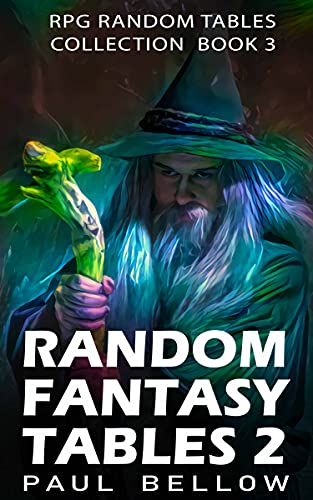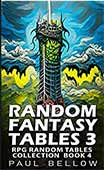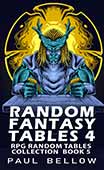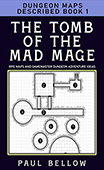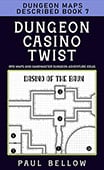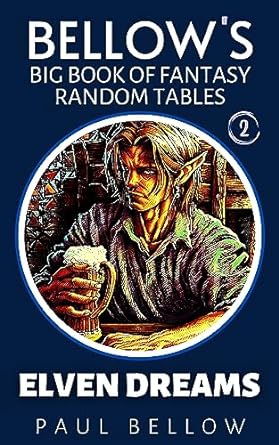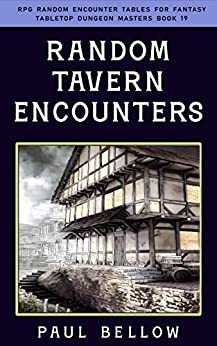A Deep Dive into Character Morality and Ethics
The Dungeons & Dragons (DND) alignment chart is a fascinating construct that serves both as a moral compass and a storytelling device in the rich tapestry of tabletop role-playing games. Originating from the game’s earliest editions, this system categorizes characters into distinct moral and ethical frameworks, facilitating an understanding of their motivations and guiding their actions throughout adventures. The alignment chart is a grid of nine diverse outlooks on life, providing a structure that helps players shape their roleplay, decision-making, and character identities, resulting in more immersive and nuanced storytelling.
Alignments are pivotal in campaigns as they tether characters to a moral framework, influencing how they perceive and interact with the world. They are not merely labels but are dynamic guides that help players navigate their characters’ moral compass, thus driving plots and character development. Alignments can also act as a lens through which the party members view each other, providing a fertile ground for intrigue, conflict, and camaraderie. As a storytelling tool, the alignment chart has enriched countless campaigns, adding layers of complexity to both heroes and villains.
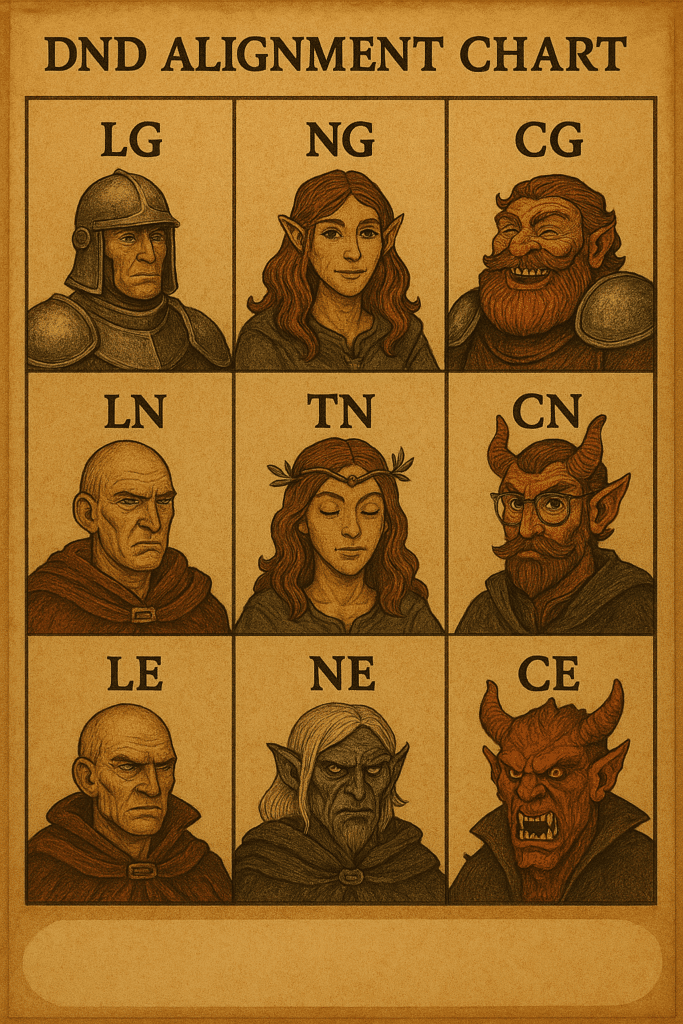
Unlike rigid, moral absolutes, DND alignments offer flexibility, allowing characters to grow, evolve, and even shift across the moral spectrum over time. This evolution can be triggered by critical events, personal revelations, or transformative relationships, making the alignment system deeply interwoven with character arcs and narrative progression. As such, alignments add depth to characters, acting less as a set of rules and more as a springboard for exploration and growth within the game.
As players assume the roles of their characters, the alignment chart serves as a foundation upon which to build personality, motives, and interactions with others. It encourages players to explore ethical dilemmas and confront moral ambiguities within the fictional realms they inhabit. This exploration not only enriches the game world but also enhances personal engagement with the character, fostering a more profound connection to the storytelling experience.
Ultimately, by effectively integrating alignment into gameplay, DMs and players alike can create compelling narratives that transcend conventional storytelling. The alignment system becomes an instrument of creativity, allowing the crafting of adventures that are as unpredictable and varied as life itself. Thus, understanding and employing the DND alignment chart can transform a game into a richer, more captivating venture into the realms of fantasy.
Understanding the Basics of the Alignment System
The DND alignment system is built upon two fundamental axes: Law vs. Chaos and Good vs. Evil. These axes intersect to form a grid of nine possible alignments, each representing a distinct philosophical approach to decision-making and ethical behavior. The Law vs. Chaos axis considers a character’s view towards order, tradition, and authority, while the Good vs. Evil axis assesses their moral inclinations, especially in how they treat others.
At one end of the Law vs. Chaos spectrum lies Law, where individuals value structure, rules, and stability. Lawful characters believe in the importance of order and often adhere to a code or societal laws. The opposite, Chaos, is marked by a rejection of constraints, an embrace of individuality, and often, a prioritization of personal freedom. Characters inclined towards chaos often resist authority and seek to act independently, following their own beliefs.
Conversely, the Good vs. Evil spectrum is defined by an individual’s moral compass. At the Good end, characters exhibit altruism, empathy, and a desire to help others, often sacrificing personal gain for the welfare of the many. Evil, on the other hand, encompasses selfishness, malice, and a willingness to harm others, whether for personal gain, power, or pleasure. Neutrality, situated between these extremes, is often more self-serving or pragmatic, lacking the propensity for either pronounced benevolence or malevolence.
The intersection of these axes gives rise to the nine unique alignments, each reflecting a nuanced view of morality and ethics. These alignments are: Lawful Good, Neutral Good, Chaotic Good, Lawful Neutral, True Neutral, Chaotic Neutral, Lawful Evil, Neutral Evil, and Chaotic Evil. Each alignment offers a distinct prism through which characters perceive the world, guiding how they might act in situations and interact with others.
Understanding these alignments requires more than simply examining what they are, but also exploring how they impact roleplay and character development. Each alignment provides a framework that players can use to craft their characters’ personalities and ethical boundaries. As such, the alignments serve as both a guiding light for crafting character backstories and a dynamic force for storytelling within campaigns.
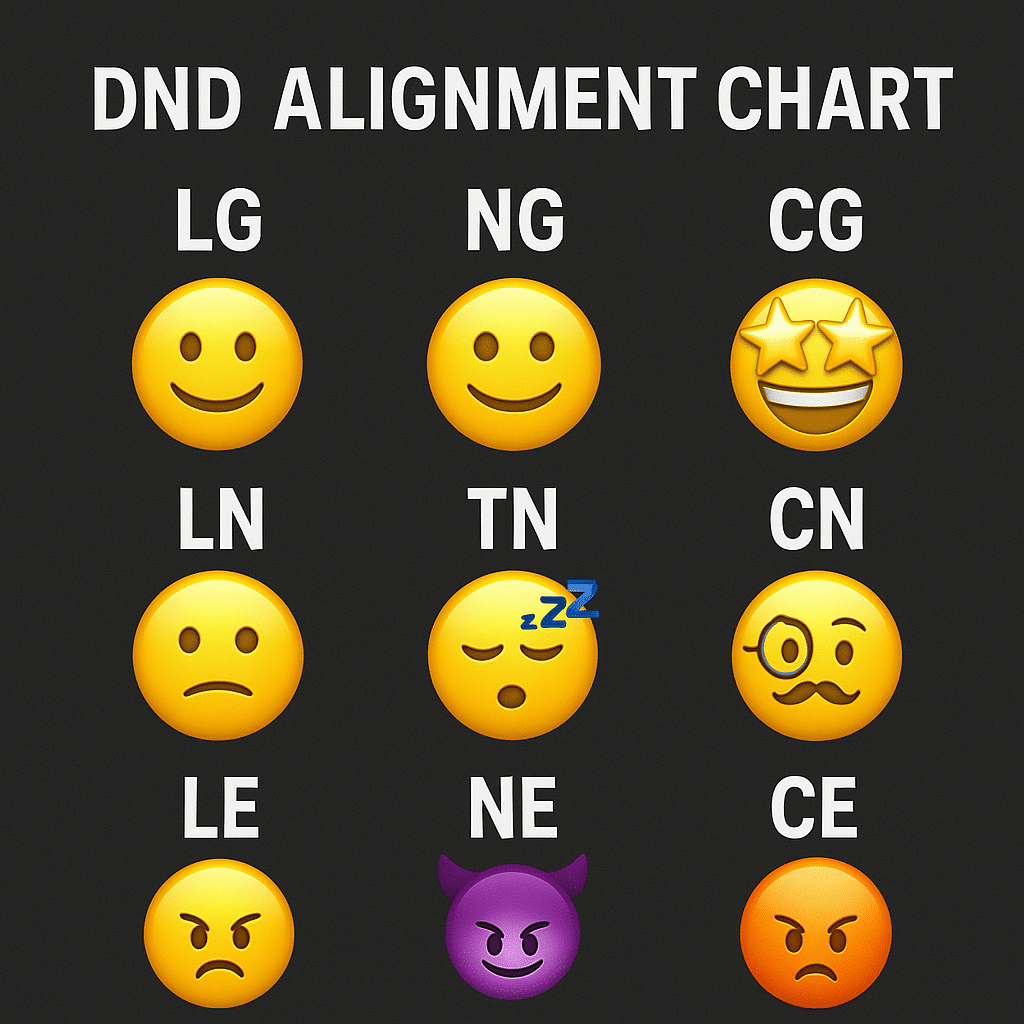
Exploring the Nine DND Alignments
Each alignment in DND allows characters to adopt different moral and ethical viewpoints, adding a rich layer of complexity to any campaign. They reflect varying degrees of commitment to law, chaos, good, and evil, encouraging players to explore diverse points of view. This system also acknowledges that people, like characters, are rarely one-dimensional, offering flexibility that mirrors real-world moral complexities.
Alignments open avenues for dynamic roleplay, as players consider their characters’ motivations and how they are influenced by their alignment. For example, a character might adhere strictly to their code as a Lawful Good paladin, while another might flexibly interpret situations as a Chaotic Good rebel. Alignments inform players not only about how their characters might behave, but also how others might perceive or interact with them within the game.
In roleplay, exploring the nuances of each alignment can result in innovative storytelling and character development. Players may devise character arcs that challenge initial alignments, engendering growth as these personas evolve through triumphs, trials, and tribulations. Furthermore, alignments can also be tools of intrigue or conflict within the party, enriching the narrative with moral dilemmas that invite players to reflect on deeper ethical questions.
Lawful Good
The Lawful Good alignment embodies the archetype of a righteous hero, motivated by honor, a sense of duty, and the greater good. Characters with this alignment, often paladins or judges, prioritize justice and the welfare of others, adhering strictly to moral standards and rules. Lawful Good characters view law and goodness as inseparable concepts, aiming to create a society where justice prevails and the weak are protected.
Typical behaviors of Lawful Good characters gravitate towards selflessness, valor, and responsibility. They’re often seen ministering to the needy, defending the innocent, and ensuring that fairness and truth prevail. They adhere to codes of conduct, whether personal or societal, and see their role as upholding these standards against wrongdoing and corruption.
Common tropes within the Lawful Good alignment include the knight in shining armor or the virtuous law-keeper, whose devotion to justice often comes with challenges. While their steadfast adherence to law and morality serves as an asset, it may also incur conflicts with the more rebellious or morally ambiguous characters. This alignment pulls from classic archetypes found in fiction, often depicted in characters like Superman or Captain America, who abide by a definitive moral compass.
The Lawful Good alignment encourages roleplay that explores themes of sacrifice, leadership, and moral dilemmas. Players embodying such characters often grapple with issues of ethics versus practical needs or reconciling the letter of the law with its spirit. Lawful Good characters, through their actions, provide narrative stability, acting as the moral anchor for party dynamics while also challenging others to uphold a shared sense of integrity and justice.
Neutral Good
Characters identifying with the Neutral Good alignment prioritize the well-being of others, balancing the need for structure with personal freedom for a harmonious greater good. Often titled as the “helpful altruists,” Neutral Good individuals strive for goodness without bias toward law or chaos, acting as mediators between polarized extremes.
Neutral Good characters tend to be compassionate and kind, guided by empathy rather than strict adherence to social expectations or rebellious impulses. They act based on what they perceive as morally right, often considering both personal convictions and societal needs. Such characters pursue fairness without being bogged down by rigid rules or chaotic whims.
Roleplaying Neutral Good characters offers a unique perspective that emphasizes collaboration and understanding in achieving objectives. These characters act from a belief that cooperation and goodwill are more potent than dogma or anarchy. They provide a stabilizing influence within adventuring parties, promoting unity and resolving conflicts thoughtfully.
Neutral Good individuals can take on roles as peacemakers or diplomats, prioritizing dialogue over confrontation, and valuing partnerships in facing challenges. Their flexible approach allows them to collaborate with varying alignments, fostering diverse storytelling opportunities across the campaign as they navigate moral challenges and advocate for benevolence.
Chaotic Good
Chaotic Good characters are driven by their ideals of freedom, rebellion, and an innate sense of justice that defies oppressive systems. Referred to as the “rebels with a cause,” these characters often challenge restrictions, advocating for change to dismantle corruption and inequality. They act according to a personal code that values individual rights and the fight against tyranny.
The core motivation for a Chaotic Good character is the belief that goodness can be achieved through immediate action and personal conviction, rather than through adherence to authority or societal rules. This alignment embraces the belief that structures should serve people, not constrain them, and that personal morality often supersedes unjust laws.
Roleplaying a Chaotic Good character allows for dynamic storytelling centered around activism, individualism, and the pursuit of personal truths. These characters might be vigilantes, revolutionaries, or free spirits who believe in helping others, yet shun traditional paths to achieve their goals. They embrace speed and spontaneity in resolving situations, valuing the direct and sometimes unconventional road to justice.
Such characters align with adventuring parties by offering fresh perspectives and a willingness to challenge the status quo. Conflicts might arise when their methods clash with more lawful companions, yet their shared goal of doing good for others acts as a unifying force. Chaotic Good characters invite players to explore their rebellious nature while advocating for equity through imaginative roleplay.
Lawful Neutral
The Lawful Neutral alignment is characterized by an unwavering dedication to order, rules, and systems. Lawful Neutral characters prioritize structure over morality, believing that the maintenance of law and stability is of paramount importance. These individuals often serve as judges or bureaucrats, dedicated to upholding the law impartially, regardless of its moral implications.
In behavior, Lawful Neutral characters are methodical, rational, and disciplined. They consider the law as a guiding force, often abiding by structures and hierarchies in their decision-making. Their ultimate allegiance is to the system, be it a legal code, organizational rule, or personal discipline, regardless of the moral outcome.
Roleplaying a Lawful Neutral character emphasizes the importance of order and predictability, as players portray personas that integrate lawfulness into everyday decisions. Such characters may serve as guardians of balance, seeking to establish a framework within which both good and evil can coexist. Their neutrality in moral matters can be challenging to others, yet they often act as stabilizers within party dynamics.
Lawful Neutral characters excel in environments where order is critical and serve to reinforce the importance of community and societal structure. They present opportunities for roleplay that grapples with the potential rigidity of law and the consequences of impartiality, allowing players to delve into the nuances of ethical governance and impartial execution of duty.
True Neutral
True Neutral characters embody balance, striving to maintain harmony between law and chaos, good and evil. This alignment is less about indifference and more about a calculated detachment from extremes, aligning with natural forces or personal equilibrium. True Neutral individuals are often seen as pragmatic and flexible, prioritizing balance above all else.
These characters often appreciate the cycle of life, the natural order, and the interconnectedness of all things. They avoid taking sides and abide by the belief that the universe requires balance to sustain itself. True Neutral characters may be druids or monks, individuals who walk paths of moderation and see strength in maintaining equilibrium.
Roleplaying True Neutral characters introduces opportunities for nuanced perspectives, focusing on adaptability, inclusion, and the avoidance of conflict. They might act as mediators within the party, seeking to integrate varying perspectives or mitigate disruptive elements that threaten the group’s harmony. Their actions are driven by a desire to preserve balance, often steering the party toward holistic resolutions.
The versatility of True Neutral allows players to explore a multidimensional approach to character development, free from the constraints of rigid moral doctrines. They can adopt roles that explore the complexity of neutrality, crafting narratives that reflect the fluid interplay of competing forces and the art of compromise in a world of extremes.
Chaotic Neutral
Chaotic Neutral characters are defined by their unpredictable, self-directed behavior, guided by the principle of personal freedom without overt regard for the moral implications of their actions. Often perceived as “free spirits,” these individuals revel in spontaneity and resist any form of constraint, striking a balance between deviance and benevolence.
The hallmark of Chaotic Neutrality is its embracement of independence, with characters acting according to their impulses and whims. This behavior is not necessarily malicious but rather rooted in a desire for autonomy and a rejection of externally imposed limits. Characters of this alignment might defy expectations, act contrary to norms, or challenge assumptions simply for the sake of it.
Roleplaying Chaotic Neutral characters allows for a fresh and often comedic approach to game scenarios, introducing moments of unpredictability and creative problem-solving. They might act as wildcards within their party, delighting in chaos and offering a dynamic presence amidst more rigidly aligned companions. Their decisions can surprise allies and antagonists alike, leading to growth and unexpected alliances.
In campaigns, Chaotic Neutral individuals often invite players to explore themes of freedom, self-expression, and the beauty of unrestrained existence. They allow for a flexible and avant-garde exploration of identity and behavior, embodying the inclination to seek out and test boundaries in a whimsical dance across the moral spectrum.
Lawful Evil
Characters who align with Lawful Evil employ systems, laws, and societal structures to achieve selfish or malicious goals. Their behavior is often marked by cunning, manipulation, and a methodical approach that utilizes order and authority as tools for personal gain. This alignment often produces tyrants, schemers, and those who wield power with ruthless efficiency.
Lawful Evil individuals value order and structure, albeit for self-serving ends. They exploit rules and processes to consolidate power, often justifying their actions within the framework of an established system. These characters might be leaders of oppressive institutions, calculating politicians, or power brokers who manipulate the structures around them.
Roleplaying Lawful Evil characters provides a platform for exploring ambition, control, and moral ambiguity within a structured environment. Players crafting such personas must engage with the notion of ethical boundaries and the strategic use of lawful systems to gain an edge. These characters often serve as intriguing antagonists or complex allies within a campaign.
This alignment encourages interplay between the concepts of order and malevolence, exploring the darker sides of leadership and authority. Lawful Evil characters can be catalysts for conflict and intrigue, driving narratives that reveal the consequences of unchecked ambition, the power of manipulation, and the moral shades of governance.
Neutral Evil
Neutral Evil characters are driven by ruthless pragmatism and self-interest, unburdened by a commitment to law or chaos. Their amorality is defined by a single-minded pursuit of personal gain, with ethical considerations taking a backseat to ambition and convenience. Neutral Evil individuals act as opportunists, willing to ally with any force that aids their objectives.
The behavior of Neutral Evil characters is marked by cunning and efficiency. They prioritize their success over the welfare of others and do not shy away from deceit, betrayal, or treachery if it serves their purposes. Typically, they act without regard for the suffering they may cause, valuing their own desires above the broader good.
In roleplay, Neutral Evil characters embrace a Machiavellian approach, offering a dynamic exploration of ambition and self-preservation. These personas might be seen as mercenaries, spies, or cunning manipulators who deftly navigate complex networks for personal advantage. Their presence in a campaign introduces tension and intrigue, raising questions about the cost of unchecked ambition.
Neutral Evil invites players to examine the ethics of self-interest and the impact of morality on personal advancement. Characters of this alignment challenge others to reflect on the consequences of ambition unfettered by conscience, unveiling the darker facets of human nature and the allure of power without principle.
Chaotic Evil
Chaotic Evil characters thrive in destructive freedom, rejecting authority and reveling in chaos and cruelty. These individuals embody anarchy, acting according to vicious whims and desires that disregard the welfare of others. Their hatred of order and propensity for mayhem make them volatile and dangerous foes within any campaign.
Characters with a Chaotic Evil alignment are often driven by profound selfishness and malevolence, lashing out with little care for the repercussions of their actions. They disrupt structures, challenge authority, and spread fear, favoring brutal force and intimidation as instruments of control. Personal pleasure and chaos are all that matter to them.
Roleplaying a Chaotic Evil character can involve exploring the dark, primal instincts of chaos and the raw freedom it offers. These personas might be berserkers, bandits, or unhinged sorcerers who appreciate anarchy as a powerful, liberating force. Their interactions within a party or campaign allow for narratives rich with conflict, chaos, and consequence.
Chaotic Evil challenges players to navigate the boundaries of moral depravity, examining the sociopolitical upheaval that follows in its wake. This alignment invites introspection on the nature of power, the ethics of destruction, and the rebellion against authority, creating an engaging exploration of the confrontation between law and anarchy.
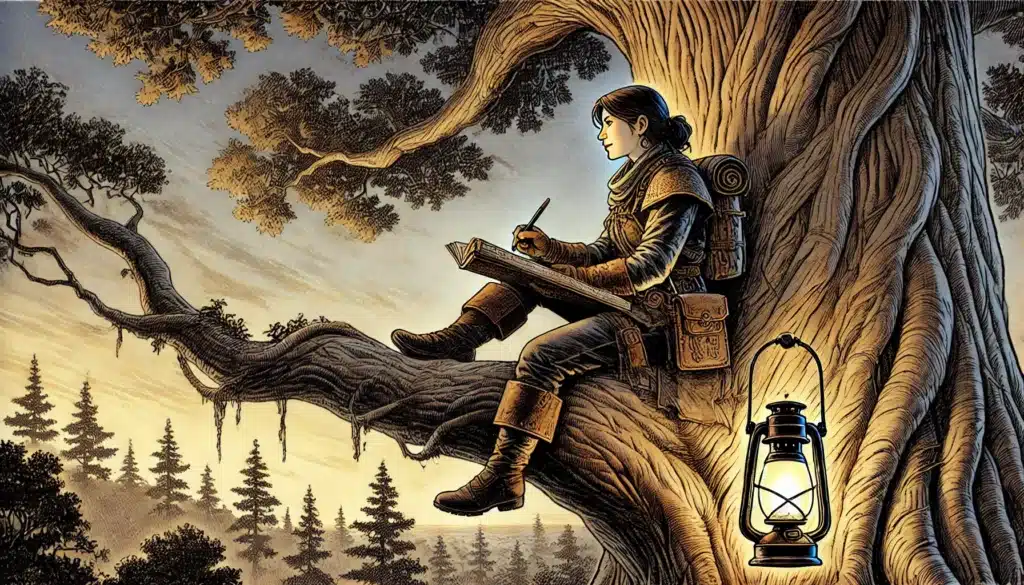
Roleplaying with Alignment
Alignment serves as a powerful guide for crafting character behavior, shaping decision-making processes, and guiding interactions. For many players, it is a foundational element that informs their understanding of character motivations and moral compasses. However, the use of alignment goes beyond mere archetypes; it becomes a tool for realizing the nuances of identity within the game.
Embracing alignment thoughtfully allows players to explore the intricacies of their character’s ethics and personality, encouraging depth and complexity in roleplay. Whether a paladin wrestles with the strictures of their code or a rogue navigates the moral gray areas of survival, alignment plays a crucial role in storytelling dynamics. Through alignment, players can engage with themes of morality, responsibility, and choice, fostering a more evocative and immersive experience.
An alignment isn’t meant to pigeonhole characters but rather to serve as a lens through which they view the world. It provides a framework for internal and external conflict, illustrating how characters adapt, change, and respond to the evolving circumstances of their adventures. This flexible approach ensures that alignment remains a dynamic and integral aspect of character development.
Making Alignment Work at the Table
Implementing alignment effectively in gameplay requires balance, ensuring it enhances rather than restricts character and group dynamics. To achieve this, players and DMs should adopt practices that encourage creativity and cooperation while respecting the diverse interpretations and manifestations of alignment.
- Explore Inner Conflict: Encourage characters to reflect on moral dilemmas and internal struggles, providing depth to their alignment.
- Resist Stereotypes: Allow characters to break traditional alignment molds, creating unique personalities.
- Align Behavior with Backstory: Ensure character actions are consistent with their past experiences and motivations.
- Foster Group Discussions: Open communication among players cultivates understanding of diverse alignments and motivations.
- Use Alignment as Guidance, Not Law: Alignments should guide character choices, not dictate them.
- Embrace Change: Allow alignments to shift naturally in response to key events, character interactions, and growth.
- Incorporate Diverse Perspectives: Encourage players to understand and incorporate different worldviews represented by alignments.
- Facilitate Roleplaying with Purpose: Use alignment to enhance narrative impact and develop meaningful character arcs.
- Balance Personal and Group Goals: Find harmony between individual alignment goals and party objectives.
- Create Alignment-Driven Story Hooks: DMs can use alignments to generate engaging plot lines and conflicts.
- Celebrate Complexity: Recognize the fluidity of alignment and the value of moral ambiguity in storytelling.
- Encourage Ethical Debates: Foster discussions about moral implications and ethical choices within the group.
- Address Alignment Discrepancies: DMs should mediate disagreements to maintain group harmony and immersion.
- Emphasize Growth and Learning: View alignment as a path to character evolution, allowing reassessment and adaptation.
Alignment should act as a storytelling tool that enhances the roleplaying experience, helping to craft compelling narratives and character dynamics without becoming a restrictive framework. When players and DMs work together to treat alignment as a flexible guide, characters evolve naturally, enhancing the depth and richness of their journeys.
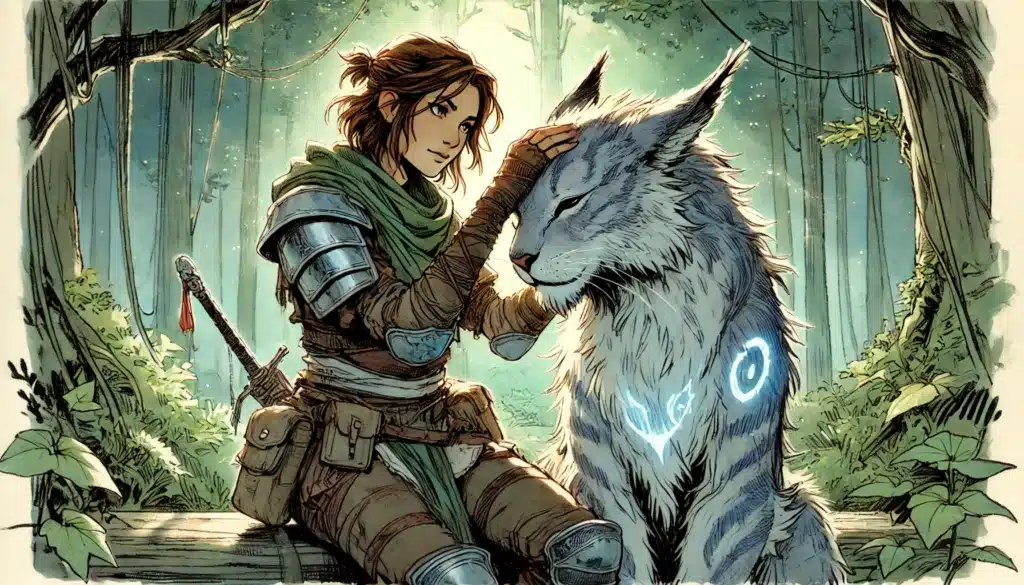
Character Arcs and Alignment Shifts
The beauty of DND’s alignment system lies in its potential for evolution—a character’s alignment can transform as they face challenges, learn lessons, and experience profound change. This fluid morality mirrors the complexity of real-life ethical dilemmas, allowing for richer character arcs.
Alignment shifts often occur organically, driven by key decisions, transformative experiences, or exposure to different philosophies. A character might begin as Lawful Good but begin questioning their rigid adherence to rules after a traumatic event, gradually shifting towards Neutral Good or even Chaotic Neutral. This reflects the storytelling potential that alignment shifts provide—an opportunity for characters to grow and develop in response to the narrative’s unfolding.
This dynamic nature of alignment shift encourages roleplay that embraces complexity and the unexpected. It allows both players and DMs to explore how characters adapt to new realities, potentially altering their moral compass. Such shifts are not only responses to in-game events but can also stem from player intention or character exploration, offering profound insights into personal transformation.
| Alignment Shift | Trigger Event | Roleplay Outcome |
|---|---|---|
| Lawful Good to Neutral Good | Witnessing corruption in a supposedly just system | Begins following a personal moral code |
| Chaotic Good to Lawful Good | Reconnecting with family traditions | Embraces structured community service |
| Neutral Good to Chaotic Good | Enslavement or wrongful imprisonment | Fights against oppressive systems |
| Lawful Neutral to True Neutral | Disillusionment with a government or organization | Emphasizes personal balance |
| True Neutral to Neutral Good | Inspired by acts of kindness | Aims to make the world a better place |
| Chaotic Neutral to Chaotic Good | Influenced by a charismatic leader | Joins a cause greater than self-interest |
| Lawful Evil to Neutral Evil | Power struggle or coup | Prioritizes personal ambitions without legal constraints |
| Neutral Evil to Chaotic Evil | Betrayed by close allies | Begins to indulge in chaos for personal gain |
| Chaotic Neutral to True Neutral | Enlightenment or spiritual guidance | Seeks balance and mindfulness |
| Lawful Evil to Lawful Neutral | Redemption arc through love or friendship | Upholds order without malevolent intent |
By encouraging alignment shifts, players enrich their character development, transforming them into complex, compelling actors within the narrative. This approach invites fluidity, embracing the concept of moral evolution as a natural element of immersive storytelling.
Alignment and Party Dynamics
Alignment plays a vital role in the composition and dynamics of adventuring parties. It influences relationships, cooperation, and conflict among group members, adding layers of complexity to storytelling. The synergy or tension created through differing alignments can enhance the depth and engagement of a campaign.
In a well-balanced party, alignments offer diverse perspectives, promoting roleplay that thrives on dialogue and negotiation. Characters may bond over shared values or clash over different philosophies, driving narrative progression. Handling these dynamics engenders a fuller gaming experience, where players explore the breadth of human (and non-human) ethical interplay.
Alignments also influence how players approach challenges, with party dynamics shifting in response to ethical dilemmas and consequences. Parties with mixed alignments must often work through moral disagreements to align on goals, teaching valuable lessons about compromise and cooperation.
Navigating Alignment-Based Conflict
When party members embrace different alignments, conflict is inevitable. These disagreements can create dramatic tension, offer opportunities for growth, and deepen character arcs, provided they are managed constructively. Alignments can provoke moral disputes or highlight differences in priorities, leading to enriched narrative depth.
- Open Dialogue: Encourage party members to discuss their motivations and objectives openly.
- Defined Objectives: Set clear, shared goals that transcend individual alignment differences.
- Conflict Resolution Mechanisms: Develop processes for resolving disagreements internally or with DM guidance.
- Embrace Roleplay: Leverage alignment differences for rich roleplay, allowing characters to explore their beliefs.
- Align on Big Picture: Focus on broader campaign goals that require cooperation despite ethical differences.
- Encourage Empathy: Promote understanding by encouraging players to see from their characters’ perspectives.
- Use Conflict as Drama Fuel: Turn alignment disagreements into narrative opportunities for enhanced storytelling.
- Roleplay Compromise: Characters should practice negotiation and compromise to find common ground.
- Blend Humor and Drama: Use character banter to diffuse tension, creating memorable interactions.
- Leverage Alignment Growth: Use conflicts to foster character development and growth in alignment.
- Create Neutral Zones: Establish times or locations within the campaign where alignment differences are not a focus.
- Facilitate Team-Building: Encourage scenarios that require characters to rely on each other’s strengths.
- Highlight Alignment Similarities: Identify shared values across alignments, emphasizing commonalities over differences.
Managed effectively, alignment-based conflicts can be transformative, fostering drama and character growth while keeping the campaign coherent. DMs play a crucial role in mediating disputes and ensuring harmony amid the diversity of alignments and perspectives.
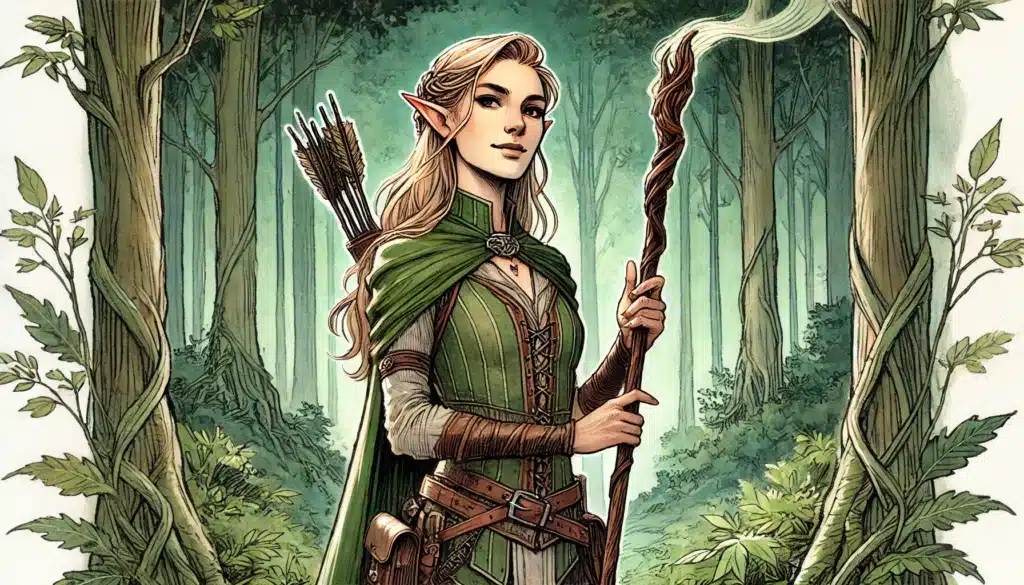
Building Thematic Party Compositions
Crafting a party composition that mixes or matches alignments offers abundant storytelling opportunities. Thematic party compositions can follow contrasting or complementary alignments, creating cohesive narratives or dynamic tensions that influence gameplay.
Alignments contribute to the party’s thematic identity, shaping group dynamics and interactions with the world. For instance, a party composed of Lawful Good and Chaotic Good members may pursue justice through different means, leading to engaging ethical debates. Alternatively, a group entirely of Chaotic alignments might revel in unpredictability and freedom, embracing the chaos of their adventures.
Roleplaying with specific alignment combinations can result in unique alliances, conflicts, and character development. Whether exploring themes of redemption, rebellion, or moral ambiguity, alignments provide a rich canvas for creating memorable experiences that resonate with players.
| Alignment Mix | Narrative Theme | Group Dynamic |
|---|---|---|
| Lawful Good + Chaotic Good | Justice vs. Freedom | Balancing authority with personal liberty |
| Neutral Good + True Neutral | Harmony and Balance | Finding equilibrium between extremes |
| Chaotic Good + Chaotic Neutral | Anarchy for Good | Embracing freedom with a conscience |
| Lawful Neutral + Lawful Evil | Control and Manipulation | Weighing order against moral cost |
| True Neutral + Chaotic Neutral | Personal Freedom | Exploring individual paths within neutrality |
| Lawful Evil + Neutral Evil | Calculated Ambition | Power struggles and strategic alliances |
| Neutral Good + Lawful Neutral | Orderly Compassion | Combining structured empathy and control |
| Chaotic Evil + Chaotic Neutral | Unpredictable Dynamics | Thriving on chaos and spontaneous interaction |
| Neutral Evil + Lawful Good | Moral Complexity | Navigating a spectrum of ethics and power |
Thematic party compositions offer creative freedom for players and DMs to explore complex narratives. By leveraging alignment creatively, campaigns develop multilayered character and plot arcs that captivate participants.
Final Thoughts on the DND Alignment Chart
The DND alignment chart is a powerful tool, encouraging players to delve into the intricacies of morality and ethics within their adventures. It provides a foundational framework, flexible enough to allow characters to come alive and engage with the dynamic world around them. When used effectively, alignment enriches roleplay, guiding character growth and enhancing plotlines.
Understanding alignment as a fluid, evolving aspect of character development allows players to embrace its complexity. It becomes less of a restrictive label and more of an opportunity for storytelling, providing a moral compass that can evolve with characters’ experiences and choices. Through alignment, players can explore conflicts and collaborations, highlighting both personal struggles and broader thematic elements of the campaign.
Alignments invite players to interpret the moral landscape of their characters, molding them into compelling personalities with depth and authenticity. This approach encourages collaboration and creativity, as alignment becomes a springboard for engaging narratives and rich character interplay. The alignment chart thus acts as a guide, offering insight into who characters are and who they might become.
For Game Masters, alignment is a valuable resource, enhancing party dynamics and fostering immersive storytelling. It provides a structure for crafting complex plotlines that keep heroes and villains intertwined in a tapestry of ethical and philosophical exploration. By leveraging alignment judiciously, DMs can stimulate moral reflection and drive character development, enriching the game’s narrative depth.
Ultimately, the DND alignment chart serves as a catalyst for profound storytelling, contributing to more immersive and meaningful gameplay. It offers a narrative spectrum that reflects the complexity of real life, allowing character-driven interpretation and evolution. When used thoughtfully, alignment not only enhances the depth and immersion of the game but fosters a collaborative storytelling environment where possibilities are as boundless as the imagination itself.

